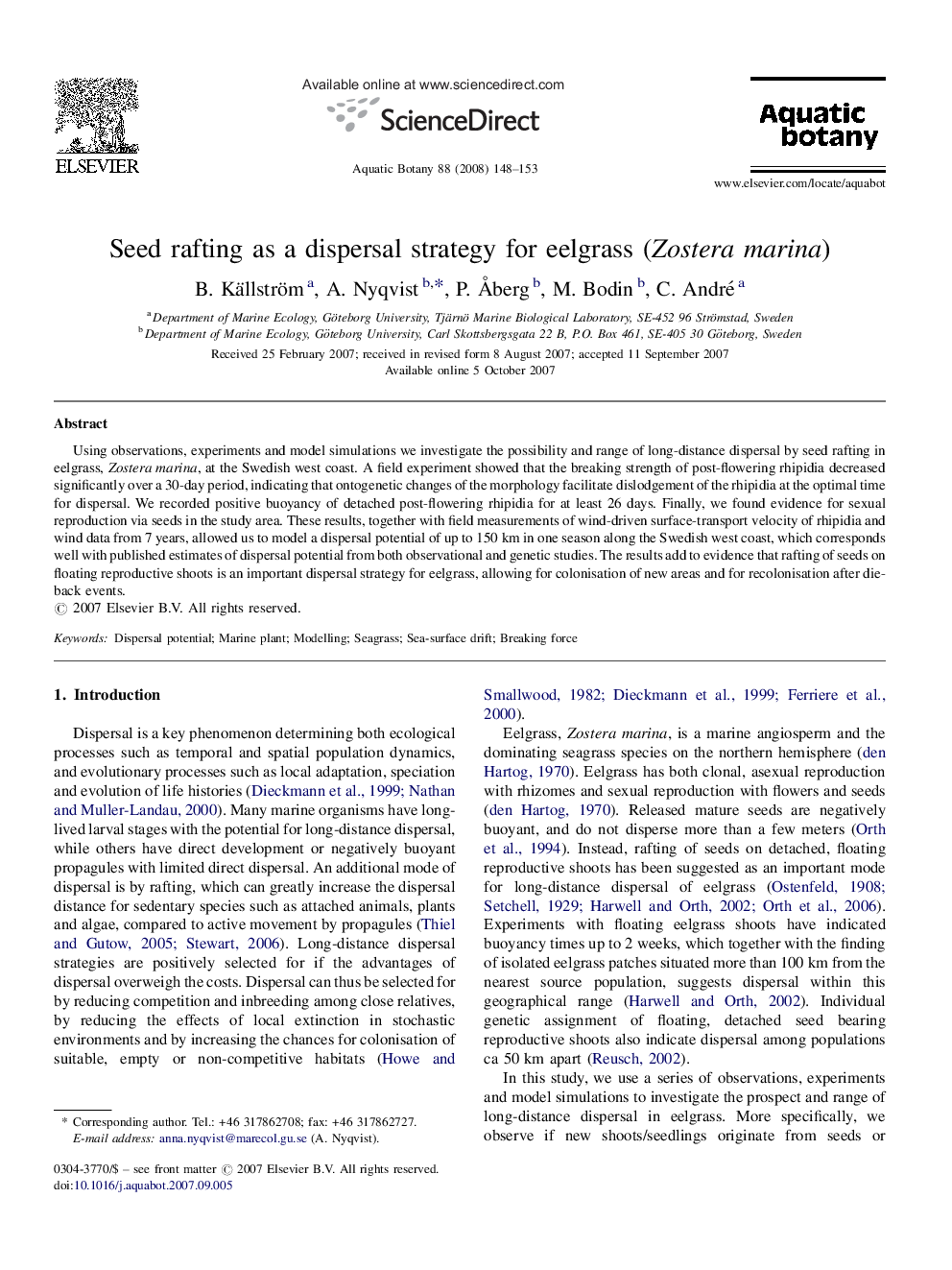| Article ID | Journal | Published Year | Pages | File Type |
|---|---|---|---|---|
| 4528671 | Aquatic Botany | 2008 | 6 Pages |
Using observations, experiments and model simulations we investigate the possibility and range of long-distance dispersal by seed rafting in eelgrass, Zostera marina, at the Swedish west coast. A field experiment showed that the breaking strength of post-flowering rhipidia decreased significantly over a 30-day period, indicating that ontogenetic changes of the morphology facilitate dislodgement of the rhipidia at the optimal time for dispersal. We recorded positive buoyancy of detached post-flowering rhipidia for at least 26 days. Finally, we found evidence for sexual reproduction via seeds in the study area. These results, together with field measurements of wind-driven surface-transport velocity of rhipidia and wind data from 7 years, allowed us to model a dispersal potential of up to 150 km in one season along the Swedish west coast, which corresponds well with published estimates of dispersal potential from both observational and genetic studies. The results add to evidence that rafting of seeds on floating reproductive shoots is an important dispersal strategy for eelgrass, allowing for colonisation of new areas and for recolonisation after die-back events.
